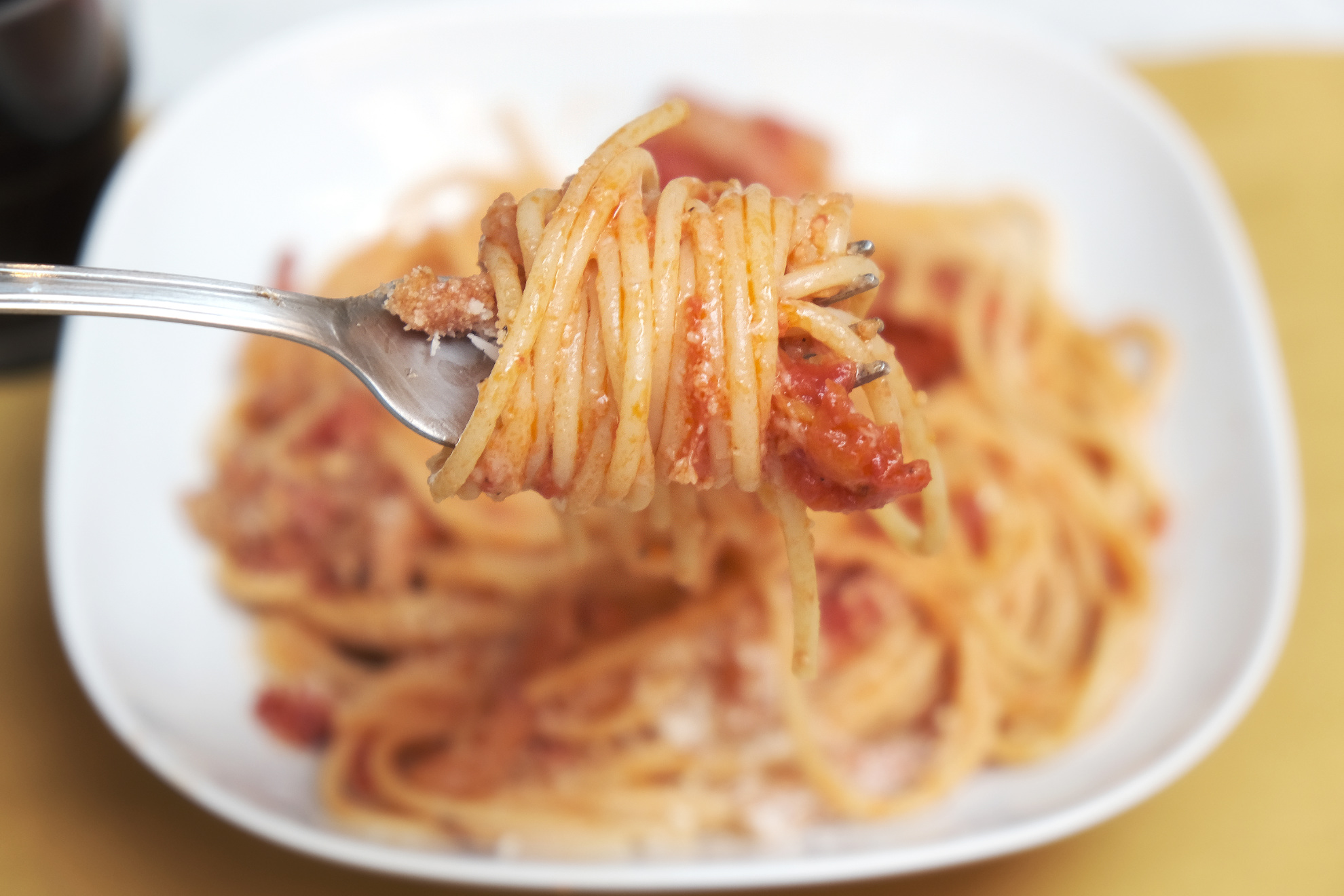Popular cuisine certainly stands out among the many symbols of Rome in the world. It is tasty and substantial, without too much sophistication, often based on pasta. As in the case of Amatriciana: tomato sauce, cheek lard, pecorino cheese. Three ingredients for one of the traditional recipes most appreciated by anyone who hangs out at Roman taverns.
To find the origins of this dish, you have to go to Amatrice, close to Rieti, in the Sibillini mountains. Tradition has it that the first Amatriciana spaghetti were prepared there. In ancient times Amatriciana was cooked with spaghetti, only later were the latter replaced with bucatini (another type of long pasta, similar to spaghetti but thicker), thanks to an innovation born in Rome.
The ingredients | Ph. Carolina Fragapane

It was in the 19th century that the recipe began to take its first steps towards Rome, more precisely in the Ponte district, between the famous Piazza Navona and the imposing profile of Castel Sant’Angelo, where we still find Vicolo degli Amatriciani today. Here the market was held, where breeders and farmers from neighboring villages sold bread, meats and cheese, and offered their home recipes. Among the Amatrice shepherds who frequented this market, one in particular was so appreciated for the quality of the products that he was able to open his tavern in this area: “the Amatriciano”. Thus began the story of the Amatriciana.
Ph. Carolina Fragapane

The first written information on the recipe dates back to the nineteenth century, thanks to the Roman cook Francesco Leonardi, who was able to propose it to the Pope. Leonardi made a choice that went down in history. He cooked a popular dish, far from the sophisticated preparations based on fine meats so fashionable in the courts of Europe, at the banquet in honor of Francis I, Emperor of Austria. Banquet organized by Pope Pius VII in 1816 in the Quirinal Palace.
Leonardi also wrote the official recipe of the Amatriciana in what became an authentic cooking encyclopedia: “The Modern Apicius or the art of preparing all sorts of food”. Seven volumes in which the chef indicated over three thousand recipes, including popular stories and small work tricks. For example, in the case of the Amatriciana: add the tomato to the cheek lard base and the pecorino, taking inspiration from another humble dish from Lazio: Gricia.
Ph. Carolina Fragapane

Leonardi then claimed the authorship of the recipe. But it is difficult to say for sure who prepared a specific dish for the first time, when we talk about the immense world of popular traditions. However, the importance that Leonardi had in codifying the Amatriciana recipe and passing it on to posterity is indisputable.
The Amatriciana that we usually eat today is the same one that Pius VII and his diners tasted two hundred years ago. A rich dish made up of only three flavors: the fatty cheek lard, the pungent delicacy of tomato, the salty taste of the pecorino cheese and an optional addition of chilli.

